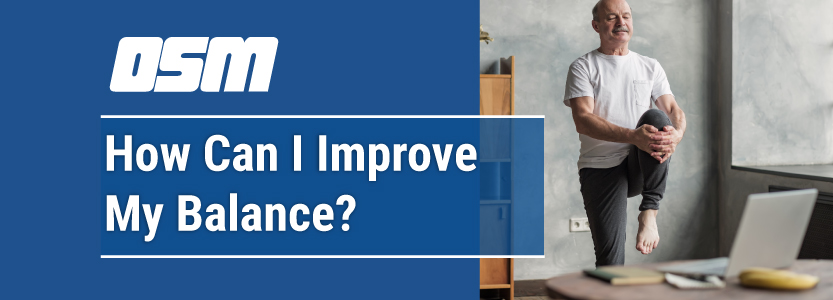How Can I Improve My Balance?
Article featured on Summit Ortho written by Kyle Hall, DPT
Although it is often overlooked, balance is an important part of your overall physical fitness. Poor balance increases your chance of falls or other causes of injury and can reduce your overall mobility.
“Your body relies on three things for balance: your eyes, your inner ear, and receptors in your joints — that’s the part that can decline with age or injury,” Hall said. These joint receptors contribute to balance by sending signals back to the brain to tell you that you are falling or that there is more pressure to one side or another.
How can I improve my balance?
Yoga and Pilates are excellent for improving your steadiness, and core-strengthening exercises like planks and straight leg raises can help as well. Heel raises can increase ankle strength, which can help support you if you wobble. But if you have problems with your balance, it may be smart to add specific balance-building exercises into your daily routine three to five times a week.
A typical progression of balance exercises may include:
- Weight shifting from side to side, forward and backward, and along a diagonal. You can stand in a corner or in a doorframe so that you can use the wall to balance yourself, if needed.
- Tandem stance — standing with your feet heel to toe, as if you’re on a balance beam. This gives you a narrow base of support, challenging your balance. To add difficulty, you can close your eyes or stand on something soft and uneven, like a pillow.
- Standing on one foot for 30 seconds — for more challenge, close your eyes.
- Doing the “Superman,” reaching your arms forward, with one leg out behind you.
- Walking heel to toe (called a “tandem walk”) or doing a few grapevine steps will help with balance as you move.
If you’re an athlete who wants to attain higher levels of performance, try using a minitrampoline, plyometrics, and box jumps. You can also catch a ball thrown by someone else, with planned and unplanned changes in direction.
Should I be working on balance?
There are several easy ways to test your balance:
“Standing with your feet together and your eyes closed, you should be able to stand for about 30 seconds. If not, balance is something to work on,” Hall said.
Other balance benchmarks include:
- Can you stand in tandem stance (heel to toe) for 30 seconds?
- Can you reach forward about 10 inches without holding on to anything?
- For people ages 65 and under:
- Can you stand on one leg with eyes open for 30 seconds?
- Can you stand on one leg with your eyes closed for 20 seconds?
There are many good balance tests available for free online. Hall suggests the Berg Balance Test, which will tell you if you’re at high risk of falling or should use a cane or walker for safety.
The Orthopedic & Sports Medicine Center of Oregon is an award-winning, board-certified orthopedic group located in downtown Portland Oregon. We utilize both surgical and nonsurgical means to treat musculoskeletal trauma, spine diseases, sports injuries, degenerative diseases, infections, tumors and congenital disorders.
Our mission is to return our patients back to pain-free mobility and full strength as quickly and painlessly as possible using both surgical and non-surgical orthopedic procedures.
Our expert physicians provide leading-edge, comprehensive care in the diagnosis and treatment of orthopedic conditions, including total joint replacement and sports medicine. We apply the latest state-of-the-art techniques in order to return our patients to their active lifestyle.
If you’re looking for compassionate, expert orthopedic surgeons in Portland Oregon, contact OSM today.
Phone:
503-224-8399
Address
1515 NW 18th Ave, 3rd Floor
Portland, OR 97209
Hours
Monday–Friday




